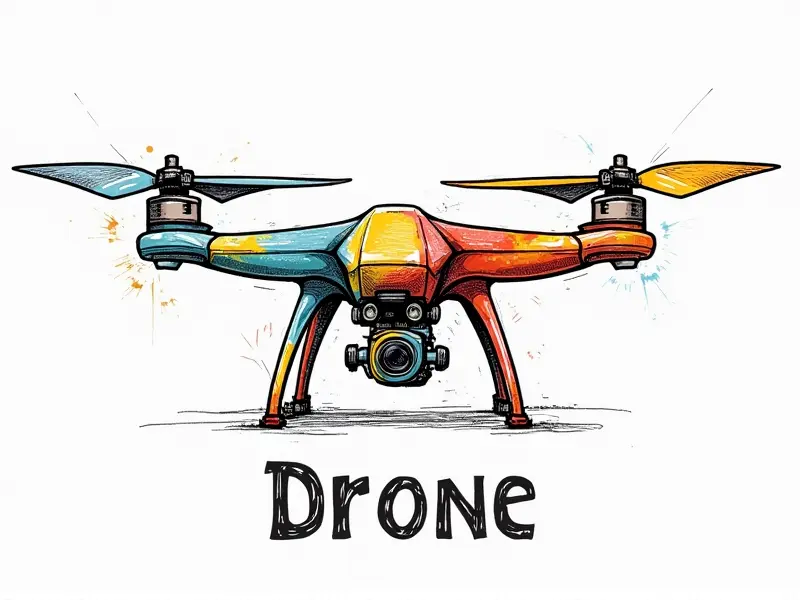How do drone cameras work?

Unveiling Drone Camera Technology
Drone cameras have revolutionized the way we capture aerial imagery, offering unparalleled flexibility and creativity. This article delves into the intricacies of drone camera technology to help you understand how these devices work and what makes them so effective.
How Drones Capture Stunning Aerial Shots
The ability of drones to take stunning aerial shots lies in their sophisticated camera systems and advanced stabilization mechanisms. These features allow drones to capture high-quality images and videos from various angles, providing a unique perspective that traditional cameras cannot offer.
Revealing the Science of Drone Photography
- Sensors: High-resolution sensors are crucial for capturing detailed images. Modern drone cameras often feature CMOS (Complementary Metal-Oxide-Semiconductor) or CCD (Charge-Coupled Device) sensors.
- Lenses: Quality lenses with wide-angle and zoom capabilities enhance the versatility of drone photography, allowing users to capture both expansive landscapes and close-up details.
Breaking Down Drone Camera Systems
A typical drone camera system consists of several key components:
- Camera Module: This houses the imaging sensor and lens assembly, responsible for capturing visual data.
- Gimbal Stabilization System: A gimbal is a mechanical device that keeps the camera steady while in motion, ensuring smooth video footage even during high-speed maneuvers.
Secrets of FPV Drones' Cameras
First-Person View (FPV) drones are equipped with specialized cameras designed for real-time video transmission. These cameras typically feature:
- Low Latency Transmission: Ensuring that the live feed is as close to real-time as possible.
- Wide Angle Lenses: Offering a broader field of view, which is essential for FPV racing and other fast-paced activities.
Exploring Drone Camera Functionality
The functionality of drone cameras extends beyond mere image capture. Advanced features such as:
- Autonomous Flight Modes: Allowing drones to follow predefined paths or track subjects automatically.
- Object Tracking: Enabling the camera to lock onto and follow specific objects, ideal for filming moving targets.
Demystifying Drone Camera Operations
To understand how drone cameras operate, it's essential to know about their control systems:
- Remote Control: Pilots can adjust camera settings and movements from a ground station or mobile app.
- Onboard Processing: Many drones have onboard processors that handle image processing, allowing for real-time adjustments and enhancements.
What Makes a Good Drone Camera?
A good drone camera should possess several key attributes:
- High Resolution: Ensuring crisp and detailed images.
- Stability: A reliable gimbal system is crucial for smooth footage.
- Connectivity: Robust data transmission capabilities are necessary for real-time monitoring and control.
Behind the Lens: Drone Camera Insights
Diving deeper into drone camera technology reveals fascinating insights:
- Light Sensitivity: Advanced sensors can capture clear images even in low-light conditions, expanding shooting opportunities.
- Battery Life: Efficient power management is crucial for extended flight times and continuous operation.
Understanding Drone Camera Resolution
The resolution of a drone camera determines the level of detail captured in images. Common resolutions include 4K, 1080p, and 720p:
- 4K Resolution: Provides ultra-high-definition video with exceptional clarity.
- 1080p Resolution: Offers full HD quality suitable for most applications.
How Drones Stabilize Their Camera Views
Drones employ various techniques to stabilize their camera views:
- Gimbals: Mechanical gimbals use motors and sensors to counteract motion, ensuring smooth footage.
- Electronic Image Stabilization (EIS): Software-based stabilization that corrects minor shakes and vibrations in the video feed.
Conclusion
The technology behind drone cameras is both fascinating and complex. From high-resolution sensors to advanced gimbals, these devices offer unparalleled capabilities for aerial photography and videography. By understanding how drone cameras work, users can make informed decisions when selecting the right equipment for their needs.

